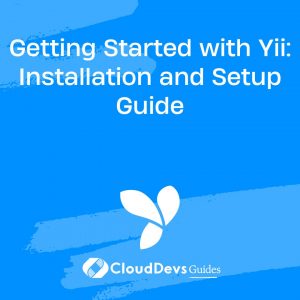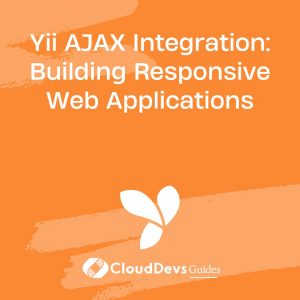Getting Started with Yii: Installation and Setup Guide
Yii is a high-performance, component-based PHP framework designed to help developers build robust and scalable web applications quickly and efficiently. This guide will walk you through the process of installing and setting up Yii, ensuring you have a solid foundation for your development projects.
Setting Up Yii Framework
To get started with Yii, you’ll need to install the framework and configure your environment. Yii provides two main installation methods: using Composer or downloading the Yii package directly.
Installing Yii with Composer
Composer is the recommended way to install Yii as it handles dependencies and updates efficiently. Follow these steps to set up Yii using Composer:
- Install Composer
If you haven’t already installed Composer, download it from [getcomposer.org](https://getcomposer.org/download/). Follow the installation instructions for your operating system.
- Create a Yii Project
Open your terminal and run the following command to create a new Yii project:
```bash composer create-project --prefer-dist yiisoft/yii2-app-basic my-yii-app ```
This command installs the Yii basic application template into a directory named `my-yii-app`. You can replace `my-yii-app` with your preferred project name.
- Run the Application
Navigate to the project directory and start the PHP built-in server:
```bash cd my-yii-app php yii serve ```
Your Yii application should now be accessible at `http://localhost:8080`.
Installing Yii Manually
If you prefer not to use Composer, you can download the Yii framework package directly from the [Yii website](https://www.yiiframework.com/download). Extract the package and move it to your web server’s root directory.
- Download Yii
Go to [Yii Downloads](https://www.yiiframework.com/download) and download the latest version of the Yii framework.
- Extract and Move Files
Extract the downloaded package and move the contents to your web server’s root directory.
- Set Up Web Server
Configure your web server to point to the `web` directory inside the Yii installation. For example, if you’re using Apache, you might need to set up a virtual host.
Configuring Yii
Once Yii is installed, you need to configure it for your environment. This involves setting up database connections and adjusting application settings.
Configuring Database Connection
Open the configuration file located at `config/db.php` and update the database connection settings:
```php
return [
'class' => 'yii\db\Connection',
'dsn' => 'mysql:host=localhost;dbname=mydatabase',
'username' => 'myusername',
'password' => 'mypassword',
'charset' => 'utf8',
];
```
Replace `localhost`, `mydatabase`, `myusername`, and `mypassword` with your actual database details.
Configuring Application Settings
You can also adjust various application settings in `config/web.php`. For instance, you can set the application name, language, and time zone:
```php
return [
'id' => 'my-app',
'name' => 'My Yii Application',
'language' => 'en-US',
'timeZone' => 'America/New_York',
// Other configurations...
];
```
Testing Your Yii Installation
After configuring Yii, it’s a good idea to test your setup. Yii provides a web-based interface for this purpose. Open your browser and visit `http://localhost:8080/index.php?r=site/about` to see the Yii default page.
Conclusion
Getting started with Yii involves installing the framework, configuring it for your environment, and testing to ensure everything is set up correctly. By following this guide, you’ll have a solid foundation for building powerful PHP applications with Yii.
Further Reading
Table of Contents









